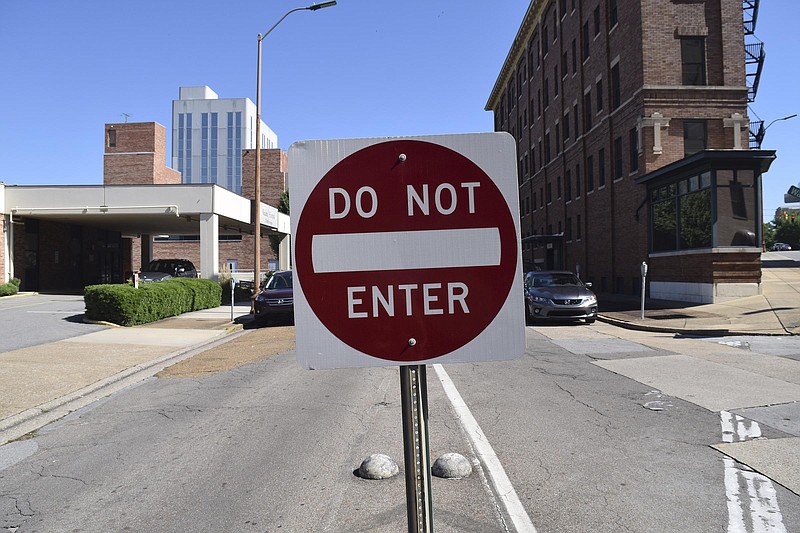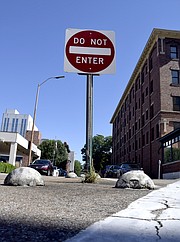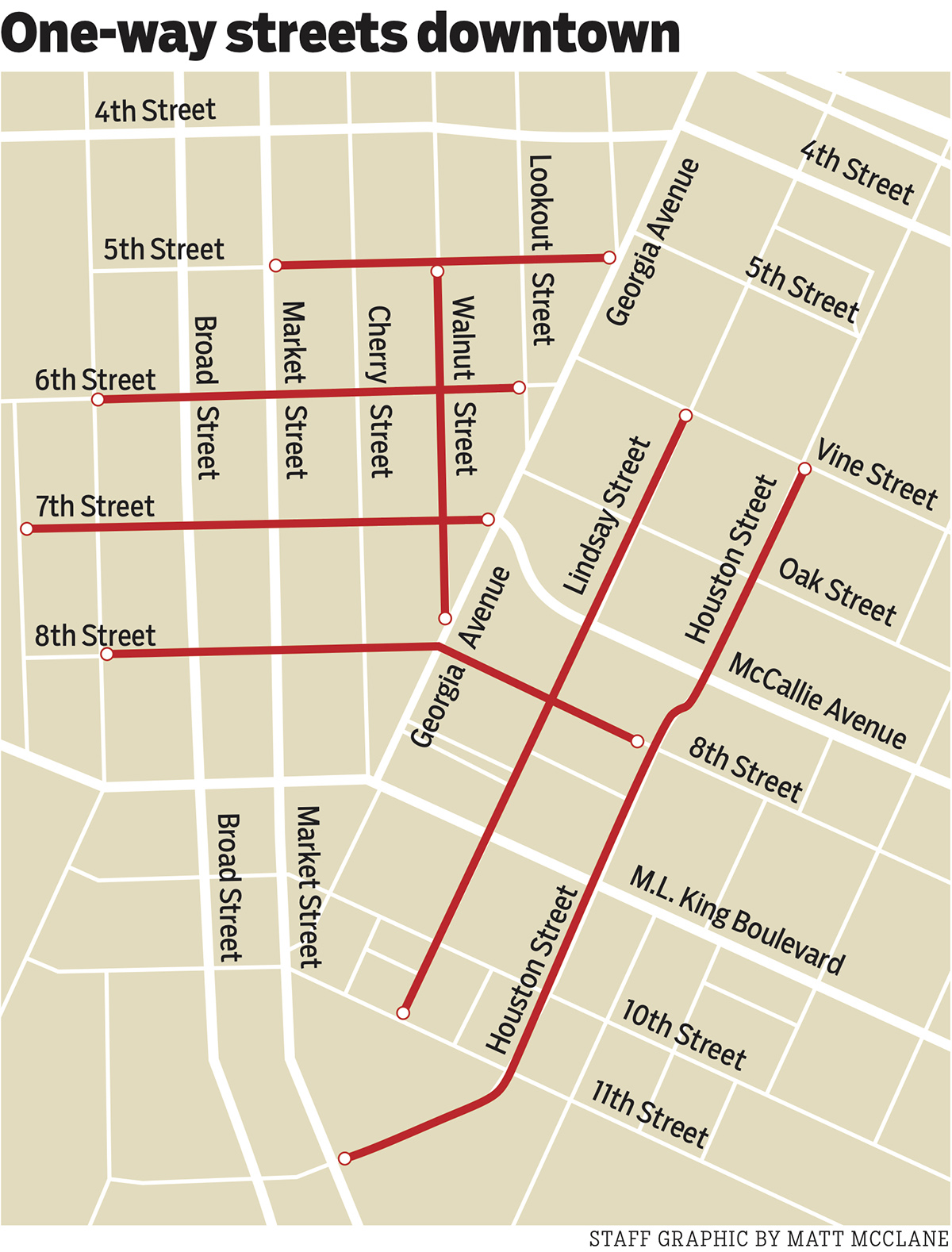In the beginning, Chattanooga and other U.S. cities had two-way streets in their downtowns.
Then, during the Cold War, one-way streets began to appear - partly because civil defense planners thought they'd help people escape during a nuclear attack.
In their heyday, one-way streets were seen as a way to get suburban commuters in and out of downtowns in a hurry.
Case in point: Chattanooga's McCallie Avenue and M.L. King Boulevard basically acted as freeways for commuters who sped at 50-60 mph in and out of downtown until around 2004, when the city made the then-controversial decision to convert both thoroughfares to two-way traffic.
Which streets would be affected?
The proposed study would look at converting the last sizable one-way streets downtown into two lanes:• 8th Street between Chestnut Street and Houston Street;• 7th Street between Pine Street and Georgia Avenue;• 6th Street between Chestnut Street and Lookout Street;• 5th Street between Market Street and Georgia Avenue;• Walnut Street between 5th Street and Georgia Avenue;• Lindsay Street between Vine Street and Houston Street;• Houston Street between Vine Street and Market Street.
Now, Chattanooga may finish what it started with McCallie and King and do away with all of downtown's one-way streets.
At its meeting tonight, the City Council will decide whether to approve a $69,500 study to have the last large, one-way streets downtown go both ways.
The study, proposed by Chattanooga engineering firm Barge Waggoner Sumner & Cannon Inc., would look at 2.66 miles of one-way sections of seven streets: Houston, Lindsay, Walnut, 5th, 6th, 7th and 8th.
"The case for two-way streets is multifold," said Blythe Bailey, administrator of the city's transportation department.
Two-way streets are more navigable, better for businesses and tend to "calm" traffic, he said.
"One-way streets require more turns in a car than would otherwise be necessary," Bailey said, since a car may need three turns (essentially, a driver sometimes has to go around a block) to reach a business on a one-way street instead of making one turn on a two-way street.
Bailey said the six-month study would include public input and weigh factors such as whether a two-way street - which needs to be wider than a one-way street - still could accommodate on-street parking.
Not everyone is sold on two-way streets.
"It would kill us. I think it's a very, very poor idea," said Taylor Watson, a certified gemologist and appraiser at Fischer Evans Jewelers, which has been at 8th and Market streets since 1869.
Watson is concerned that 8th Street would lose on-street parking - especially with a boutique hotel moving into the old Chattanooga Bank Building.
"With the hotel going in on 8th Street planning to have valet parking, guess who gets left out?" she said.
Still, the nationwide trend is to do away with one-way streets, with cities such as Dallas, Denver and Tampa making the change. It also was a recommendation of the City Center Plan published in 2014 by the River City Company, a private nonprofit organization that aims to revitalize downtown.
"We think it's a good idea," River City spokeswoman Amy Donahue said. "It's really about allowing more flexibility."
Contact staff writer Tim Omarzu at tomarzu@timesfreepress.com, www.facebook.com/MeetsForBusiness or on Twitter @meetforbusiness or 423-757-6651.


